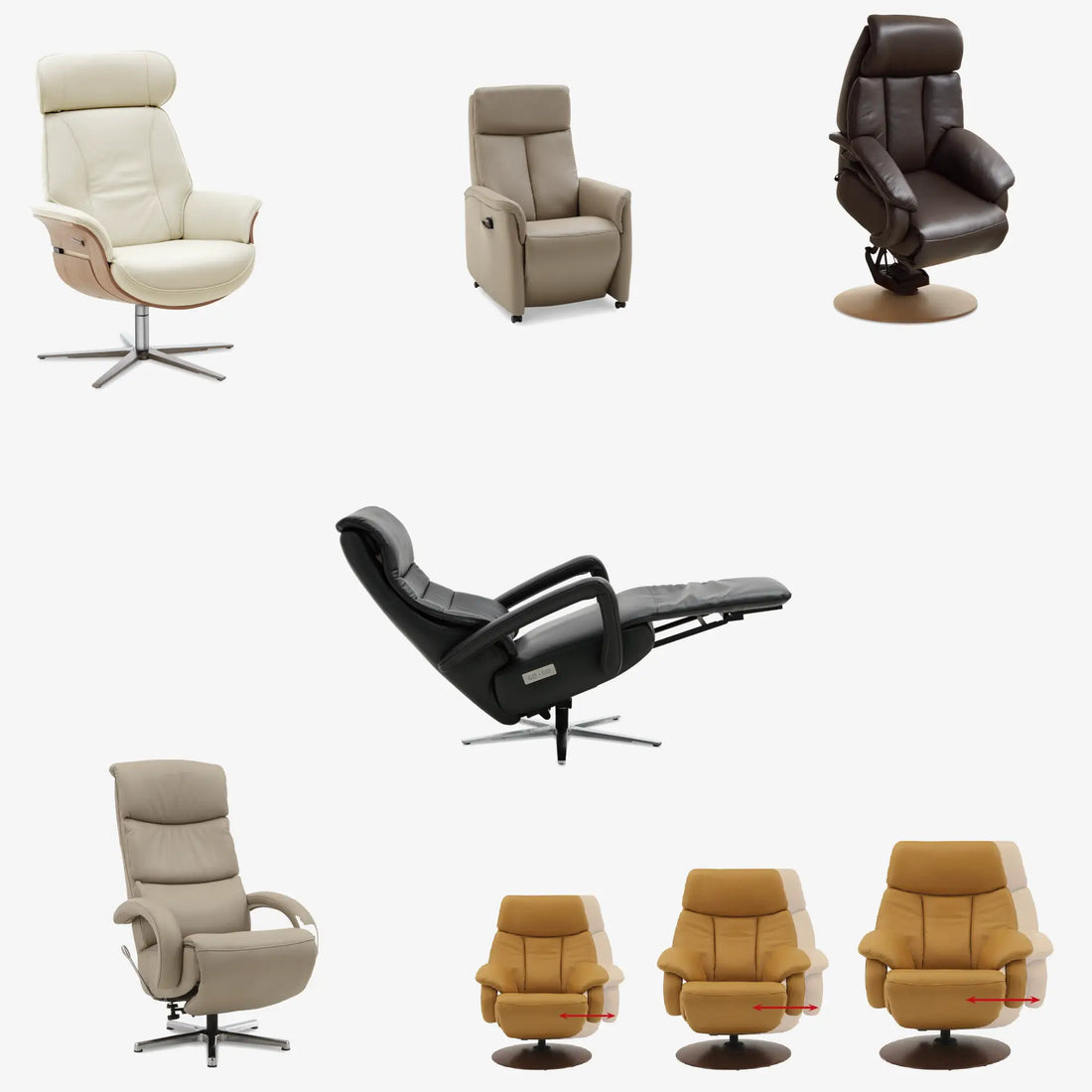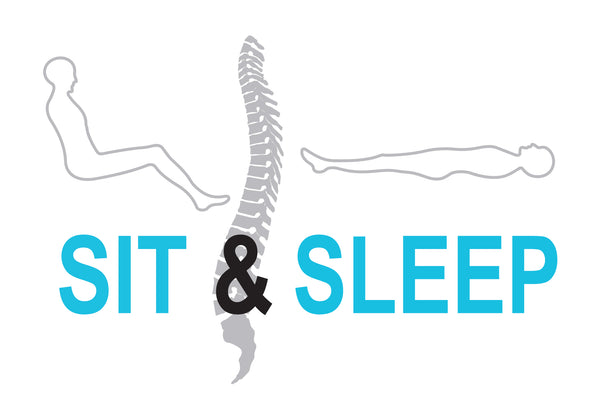
How do I choose the right recliner?
Good sitting gives a future to your back
Even when you're relaxing, it's crucial to support your body and spine in the right places. Sitting causes the pelvis to tilt backward, which flattens the lower back, decreases hip and knee angles, and increases muscle tension in the back and shoulders, putting pressure on the discs.
Healthy and ergonomic sitting helps your back. Research shows that sitting in a recliner can temporarily relieve not only physical stress but also psychological stress such as anxiety and fatigue in healthy adults. A proper, relaxed sitting posture therefore contributes to reducing both physical complaints and stress, ensuring you truly feel fully rested.
But how do you know which seat is right for you and what are the most important points to consider?
Most people still primarily want a beautiful recliner for their living room. Ergonomic aspects often fade into the background. However, you have a problem if you only like sleek, straight designs. Your back isn't flat and sleek either. So, you'll need to incorporate strategic curves somewhere to support your back. Of course, your recliner should also be beautiful, even preferably, but you absolutely mustn't overlook its support function.
Size in ergonomics
At Sit & Sleep, we look for a recliner or sofa that suits your body shape and height. We start with the right dimensions. In a recliner with the correct seat height, your feet are on the floor without any space between your thighs and the seat. The seat should fully support your thighs, and your back should make good contact with the backrest. A seat that is too high or too deep will cause you to slump. This puts tension on the soft tissues of your thighs and lower back. A recliner that is too low will cause your knees to be higher than your hips, causing your back to arch. This position also increases pressure on your thighs and lower back. The backrest should also suit your body shape. For recliners, we recommend a high enough backrest that provides support for both your back and shoulders. We prefer an adjustable backrest that provides proper support at the lower back and guarantees an open hip angle. Lumbar lordosis is influenced by the angle between your hips and thighs. Seats with a backrest of 110 to 130 degrees, including lumbar support, ensure the lowest pressure on the intervertebral discs.
When using the footrest, it shouldn't be too short to avoid pinching the Achilles tendon. In addition, the seat should provide sufficient knee support in the relaxing position, preferably with a slight bend to relax the thigh muscles. The beneficial effect is that you can sit relaxed with your pelvis in a more neutral position.
In living rooms, we often see a "would-be" neck support, which could be irreverently classified as shoulder rests rather than neck rests. This is all due to backrests that are too low (picture of the wrong neck support). Especially with a sofa with a reclining backrest, a neck support is essential. The neck support should be adjusted in both height and depth so that it actually supports the neck and not the back of the head. If you plan to use a sofa with several people, it's best to have a height-adjustable neck support, or use a separate neck support cushion with a counterweight hanging over the backrest. This allows you to adjust the height of the neck support yourself. If you also want to maintain neck support while reclining while watching television, you'll naturally want a neck support that can be tilted. Pay attention to the position where it tilts: preferably at the level of the cervical vertebra.
Another often-neglected/forgotten aspect is the armrests. When used correctly, armrests have such a profound effect that they further reduce both pressure on the intervertebral discs and muscle activity in the shoulders. If the armrests are too high, the shoulders are pushed upward, causing tension in the neck. If the armrests are too low, the tension on the shoulder and neck muscles increases, leading to a more prone posture, which increases disc pressure. If the armrests are tilted too far to the side, there is increased abduction of the arms and increased inward rotation of the shoulder head.
Heart balance position
Zero Gravity is a term used by NASA to describe the position astronauts assume during ascent into space. This position is now also known as the "heart-balance" position.
Seat tilt to Zero Gravity, also known as heart balance position
The Zero Gravity position tilts the seat backward. This prevents you from sinking into the seat, relaxes your back muscles, and relieves pressure on your intervertebral discs. You'll immediately feel the pressure reduce. Back pain diminishes or even disappears. Because the legs are positioned just above the heart in this position, blood circulation improves and venous pressure is lowered. Therefore, this position can definitely be beneficial for people who often suffer from "heavy legs" because the blood is pumped back more easily.
Quality
At Sit & Sleep, all recliners and sofas undergo a thorough inspection, and products are only released into the store if they meet all the ergonomic requirements. Furthermore, Sit & Sleep works with products that offer added value. The adaptive ergonomics ensure maximum comfort, excellent spinal support, and noticeable relief of intervertebral discs. We use only the finest materials that meet all legal requirements and guidelines of the furniture quality assurance association.
Always a solution
If we can't find the right size in our extensive range, we can always have the sofa custom-made to your specifications. For example, if a shoe in size 42 is too small and size 43 is too big, we don't want you to be forced into a bad choice; we'll make you a size 42.5. We collaborate with the manufacturer FitForm for this. They specialize in customization and offer a wide range of options for people with disabilities or back conditions. Numerous features are available to make your experience as comfortable as possible.




